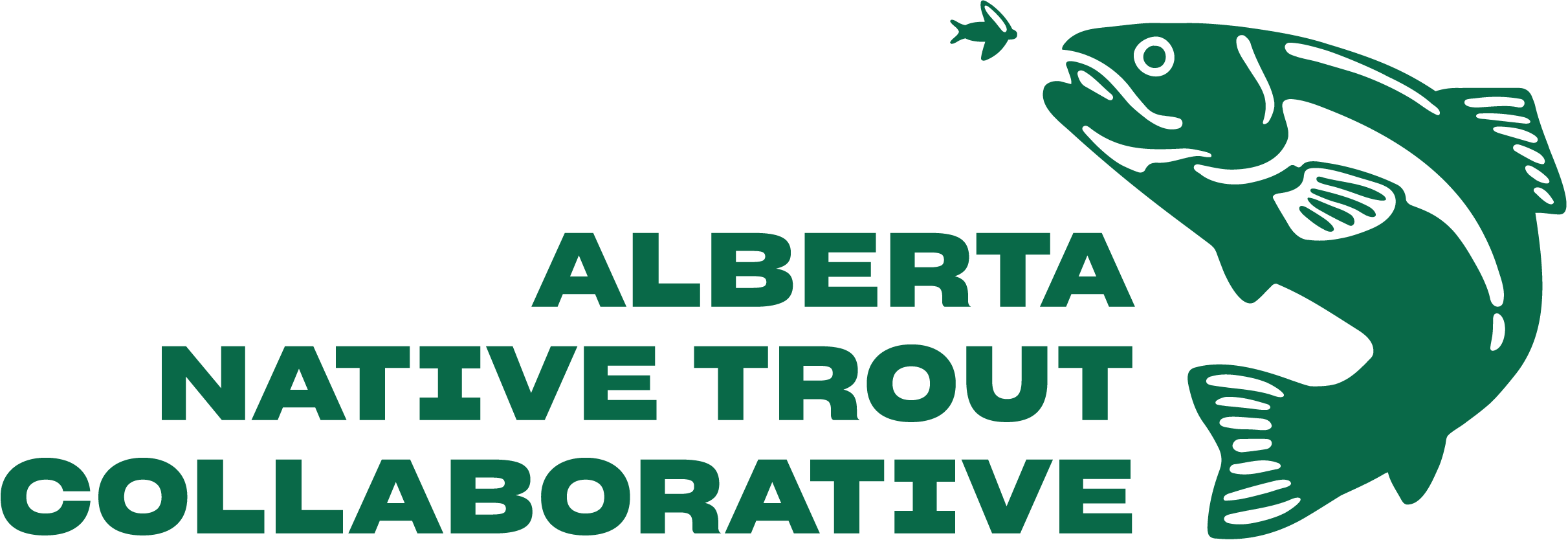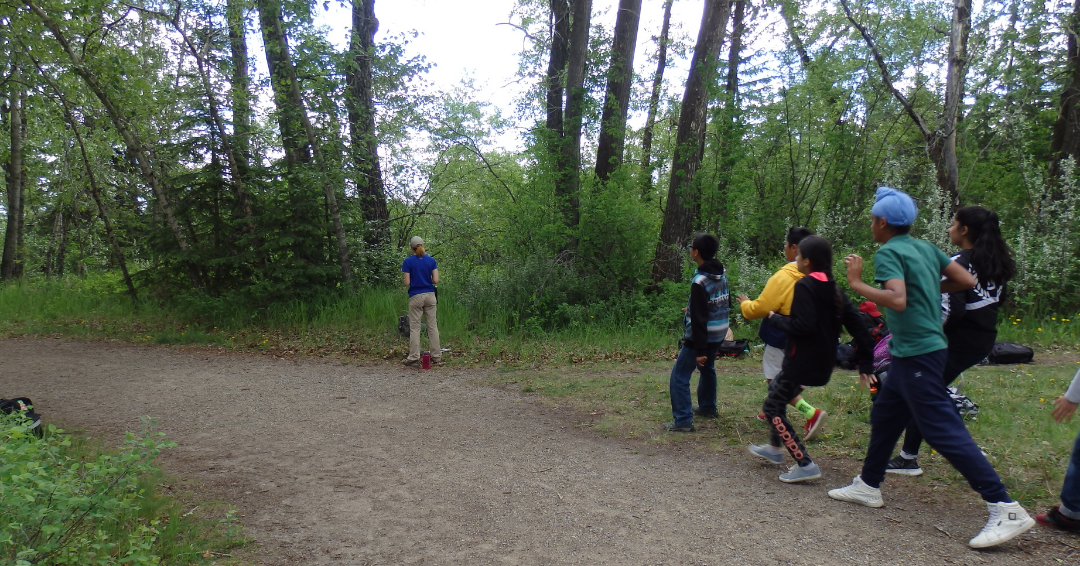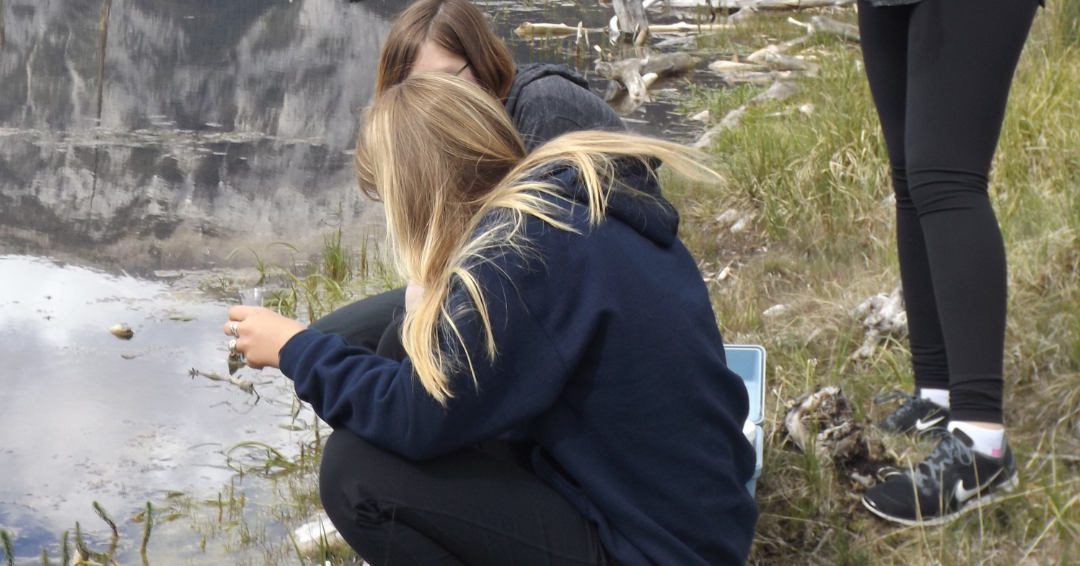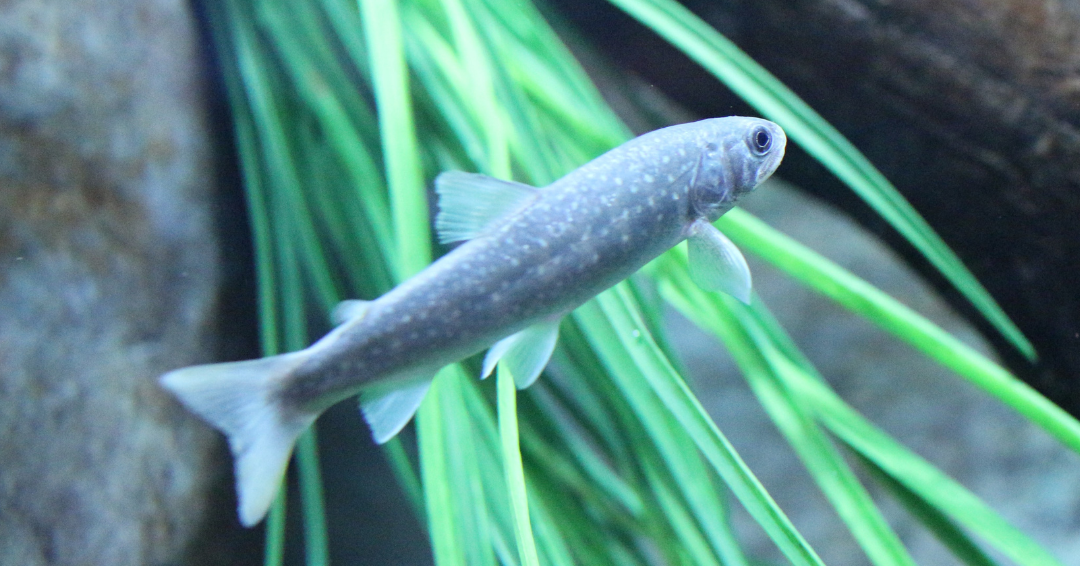Put on your trout fins and try to survive Alberta’s shrinking trout habitat.
PURPOSE
Discover what it feels like to be a trout in an ever-shrinking habitat. Brainstorm ways to protect trout habitat and keep it cold, clean, complex, clear, and connected.
GRADE LEVELS
Grades K-12
TIME NEEDED
15-20 minutes
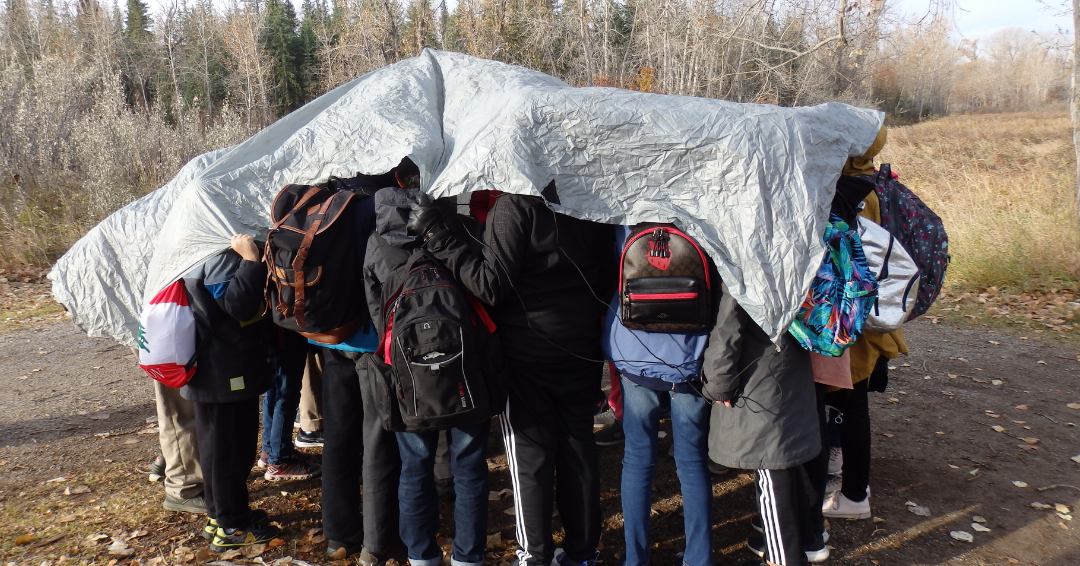
Curriculum CONNECTIONS
Earth Systems (K, Grades 1-6)
Living Systems (Grade 1-3)
Matter (Grade 3)
Matter (Grade 3)
Interactions & Ecosystems (Grade 7)
Unit E: Fresh Water and Salt Water Ecosystems (Grade 8)
Biological Diversity (Grade 9)
Sci 10: Energy Glow in Global Systems (Grade 10)
Bio 20: Ecosystems & Population Change (Grade 11)
Bio 30: Population and Community Dynamics (Grade 12)
Bio 30: Population and Community Dynamics (Grade 12)
MATERIALS NEEDED
AV equipment to show a short video
Tarp, blanket, or rope
Tarp, blanket, or rope
Instructions
- Discuss how habitat loss and climate change are two of the main reasons that species are at risk of extinction (the dual biodiversity-climate crisis).
- Have participants give examples of why this might be (e.g. competition, unsuitable climate in traditional range, hot/less oxygenated water, extreme weather events, can’t find food, water, shelter, space, etc.).
- Watch this video to explore specific examples of this happening to Alberta native trout: Threats to Alberta's Native Trout.
- Lay out a tarp (or blanket or rope). This is the lake or river. If using a “river”, demonstrate the flow of the river (e.g. the Bow River) from the headwaters (e.g. Bow Glacier) downstream (e.g. to Calgary).
- All participants stand on the tarp. They are trout.
- As a group, list threats to trout habitat. Relate threats back to specific curriculum, such as climate impacts. For each threat listed, fold the tarp in half.
- The group needs to fold the tarp in half as many times as possible without anyone falling off the tarp.
- If someone falls of the tarp, they have died. Discuss the significance: Trout need a certain amount of space to survive. They can adapt to a certain point, but there is also a point where the ecosystem cannot survive.
- At the end, see how many trout were able to survive and how small they were able to fold the tarp. Discuss how the loss of cold, clean, clear, complex, and connected habitat is impacting trout. How is climate change contributing to habitat loss?
- When the tarp is small, ask the participants who have fallen off how we may be able to save and/or restore trout habitat. For each example, you can unfold the tarp and the participant who suggested the idea can return onto the tarp. Repeat until the tarp is unfolded and everyone is back on.
Discussion:
- Discuss how we can keep the habitat/tarp large enough to support all the native trout species (parks, protected areas, climate action, education, responsible recreation, responsible industry, removal of barriers (hanging culverts at road crossings, dams), etc.).
- Discuss why preventing habitat loss is the best option, opposed to having to restore habitat. Did the habitat/tarp look the same when unfolded again?
Extensions:
- Discover ways that anglers, ranchers, off highway vehicle (OHV) users, hikers, and campers can support native trout recovery through our interactive tool Stand Up For Alberta's Native Trout. Dive in deeper with Stories from the River.
- Learn about the Alberta Native Trout Collaborative's efforts to rehabilitate native trout habit with this StoryMap: Rehabilitating Native Trout Habitat in Alberta.
Detailed Curriculum Connection
Pair This Activity With
See All Native Trout Activities
This activity is courtesy of the
Alberta Native Trout Collaborative
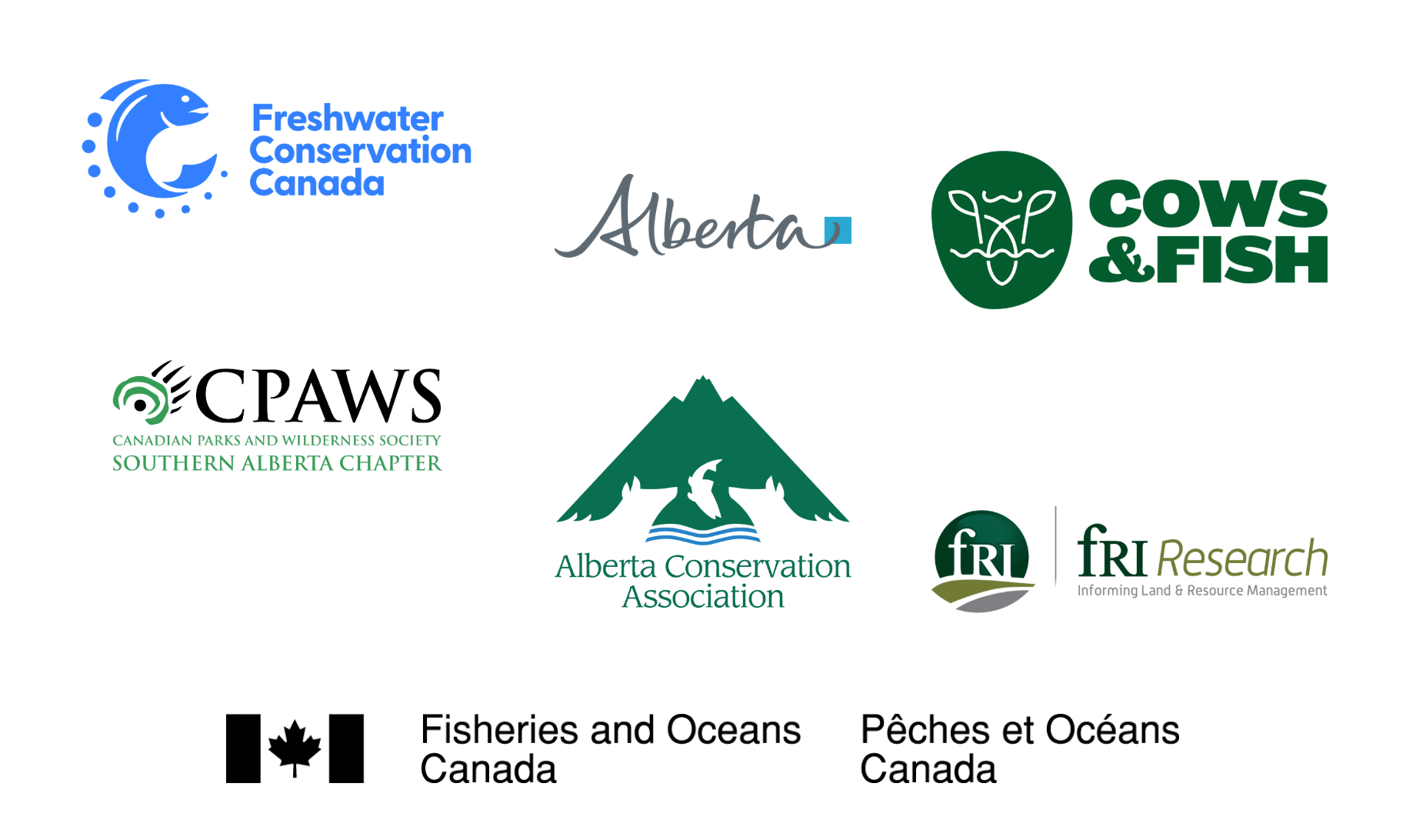
Learn more at albernativetrout.com
